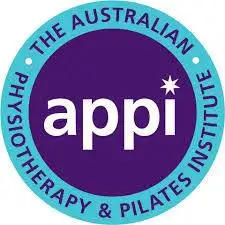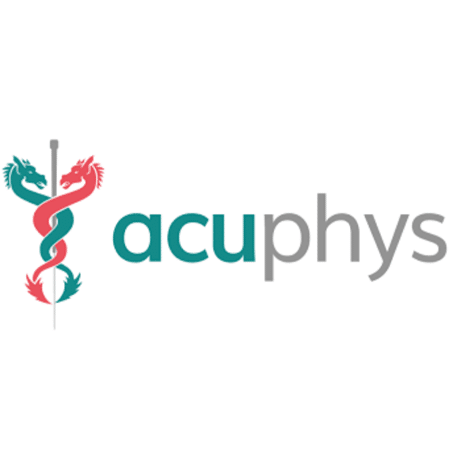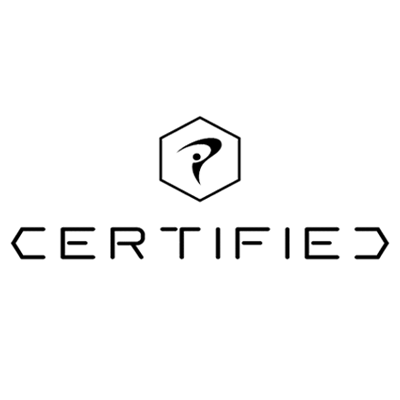Hip Pain
Hip pain refers to any pain that is experienced in and around your hip joint, which connects your upper leg bone to your pelvis.
Common types?
True or actual hip joint pain is felt on the inside of your hip or crease of your groin. People may also experience pain on or around the bony part of your hip (lateral hip pain). This type of pain indicates a likely problem with soft tissues like muscles, tendons and ligaments.
Where you feel pain will give a strong indication of what type of problem you are suffering from.
JL PhysioFit
How it might show up in your life?
Pain when going up and down stairs
Pain first thing in the day
Struggle to get in and out the car or out of a low seat
It is sore lifting your leg
Pain may gradually get worse the longer you sit
Struggle with socks and shoes
Reaching for pain killers
Where you might feel pain?
Crease of the groin
Outside of hip (bony part)
Deep in the buttock
Pain down the leg to the knee
How it might feel?
Constant or intermittent (comes and goes)
Dull, diffuse ache that gradually eases with movement
Sharp, catching sensation or nip in the hip
Why do I get Hip Pain?
There are a number of reasons why you may develop hip pain. One of the most common causes is osteoarthritis (OA) of the hip joint. To find out more on OA please visit our OA page, which explains the condition in more detail.
Hip Anatomy
The hip joint is a ball and socket joint just like the shoulder. They are similar in that they allow for a lot of movement, but the key difference is that the hip is a more stable joint. This is to help us evenly distribute load from the upper body and pelvis to the legs when we are on our feet.
The hip is made up of the thigh bone (femur), which is the ball, joining into the pelvis bone (acetabulum), which is the socket. The hip is susceptible to developing OA due to the loads we put through it (being on our feet) and this is a normal process of ageing.
Gradually and overtime the cartilage (shock absorber) starts to deteriorate so that eventually we start to expose and pressure the two ends of the bone, which can lead to pain. If this is not identified and treated it can eventually lead to needing a total hip replacement. To find out more about this please click here.
This rate at which this process occurs is dictated by certain factors such as genetics, lifestyle, weight and generally how fit and strong we are. These days people spend a lot of time at the desk, which can lead to muscular imbalances that affect the hip. It’s really important to first identify these and then apply strategies such as physiotherapy and exercise to counteract them.
JL PhysioFit
Other types of Hip Pain?
Lateral hip pain; this is pain that is generally felt on the outside of the hip, either on the bony part or just above or behind it.
This bony point is not to be confused for your hip joint, it is actually a bit of the thigh bone that sticks out and is the attachment site for various muscles, tendons and ligaments. We can experience pain here when muscles are either too tight or too weak, causing excess pressure on this area.
This pressure can also cause bursitis, which is where your bursa (a fluid filled sac that sits between the muscle and the skin) becomes inflamed and painful.
Depending on the type of pain you are experiencing, getting the correct diagnosis will dictate the likely healing timeframes and management path most appropriate to you.
How do we treat Hip Pain?
We use our 4-step system to assess and treat your hip as outlined below. This ensures you have the best possible chance of getting better and the problem not returning in future.
1) Assess
First we listen to you and take a detailed history of your pain and problem. Then we assess your back, hips and lower legs using simple movement tests and screens.
We then explain your likely diagnosis and proposed treatment plan of exactly what we need to do to get you better.
2) Mobilise
Soft tissue massage and mobilisation
Joint mobilisation
Acupuncture and Dry Needling
Muscle Energy Techniques
Taping
Advice around lifestyle, posture and ergonomics.
We begin to build your exercise rehab programme ensuring it fits around your life and is not overwhelming.
3) Strengthen
Once pain has begun to settle and we are moving in the right direction, the emphasis shifts to helping you build the necessary strength and resilience of muscles and joints in order to get those long-lasting results. We work with you 1:1 in our dedicated rehab space and/or start you in our group PhysioFit Pilates classes.
4) Optimise
Now that you are well on your way to being pain free, we show you how to build on these results. Many of our clients choose to start our Physio Led Pilates classes, which are an excellent way to stay consistent with your exercises and to keep you on track going forwards.
Note: Most people don’t need scans but if during the assessment or subsequent treatment sessions we decide your condition does need further investigation like an X-ray or MRI, we have the facilities to refer you privately if you wish. Usually, we can get this organised and have a result within 3-5 days.
How do I get started?
If you are ready to book in then you can either phone the main desk on 0191 814 9717, or use our easy online booking system by clicking here and selecting the ‘Physiotherapy Assessment/First Appointment’ option at a day and time that suits you. You will usually be offered an appointment within 48 hours.
Like to speak to someone first?
No problem, please call the main desk and if needed we can have a physio call you back to discuss your specific situation.
Testimonials
What Our Clients Say
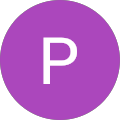 Paul Scrafton2023-09-21Physio linked to additional stretches/exercises and Pilates at JL Physiofit have improved my core strength and flexibility.
Paul Scrafton2023-09-21Physio linked to additional stretches/exercises and Pilates at JL Physiofit have improved my core strength and flexibility. Rebecca Lowes2023-09-18Michael helped me with leg pain leading up to my first half marathon. I ended up running the whole distance with no pain and was able to enjoy the experience by taking his advice and getting treatment the week before the big run. Would recommend to anyone.
Rebecca Lowes2023-09-18Michael helped me with leg pain leading up to my first half marathon. I ended up running the whole distance with no pain and was able to enjoy the experience by taking his advice and getting treatment the week before the big run. Would recommend to anyone. Neil Taylor2023-09-15Hi , i have had individual physiotherapy by Bev for my back and feet (plantar fascia )and have subsequently been able to join a beginners Pilate class run by Bev . The class is demanding , enjoyable and appropriate to my physical capability.
Neil Taylor2023-09-15Hi , i have had individual physiotherapy by Bev for my back and feet (plantar fascia )and have subsequently been able to join a beginners Pilate class run by Bev . The class is demanding , enjoyable and appropriate to my physical capability. Alison Bailey2023-09-15I thoroughly enjoyed my Pilates class this morning. I found my teacher to be very thorough, aware of each pupils ability and very encouraging. Highly recommended. Thank you .
Alison Bailey2023-09-15I thoroughly enjoyed my Pilates class this morning. I found my teacher to be very thorough, aware of each pupils ability and very encouraging. Highly recommended. Thank you . Sharon Oldroyd2023-09-15Started treatment in September 2022 after hospital appointments with consultant and scans on my left knee. I booked to see Michael as I was having major pain/grinding noise and unable to do exercise or even walk up/down the stairs properly. He assessed my mobility and strength and developed a tailored, gradual rehab program that has helped me to build strength and confidence in my knee as well as helping me slowly get back into exercising. It's made a vast difference working with Michael as I'm not an easy person to work with and always push myself too far. All my exercises were shared via email and accessible via an app. Now I'm exercising 5 times a week, spinning, strength, cardio, HIIT, rowing and running (I can finally use my home gym). Thank you for your patience and understanding my needs. Would highly recommend Michael and JL PhysioFit.
Sharon Oldroyd2023-09-15Started treatment in September 2022 after hospital appointments with consultant and scans on my left knee. I booked to see Michael as I was having major pain/grinding noise and unable to do exercise or even walk up/down the stairs properly. He assessed my mobility and strength and developed a tailored, gradual rehab program that has helped me to build strength and confidence in my knee as well as helping me slowly get back into exercising. It's made a vast difference working with Michael as I'm not an easy person to work with and always push myself too far. All my exercises were shared via email and accessible via an app. Now I'm exercising 5 times a week, spinning, strength, cardio, HIIT, rowing and running (I can finally use my home gym). Thank you for your patience and understanding my needs. Would highly recommend Michael and JL PhysioFit. Diana Robertson2023-08-26I am really enjoying beginners Pilates and feel like I have made good progress. The trainers are very good and it is a positive low-key atmosphere and everyone is friendly and welcoming.
Diana Robertson2023-08-26I am really enjoying beginners Pilates and feel like I have made good progress. The trainers are very good and it is a positive low-key atmosphere and everyone is friendly and welcoming. Julie Tough2023-08-24Enjoying this physio type class, definitely feeling the benefit.
Julie Tough2023-08-24Enjoying this physio type class, definitely feeling the benefit.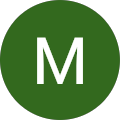 Moira Luccock2023-08-23Good class today with Michael. Well taught by Michael with options to suit our abilities. Stretching so feel I have progressed. Light hearted banter too - what more could you want! Moira
Moira Luccock2023-08-23Good class today with Michael. Well taught by Michael with options to suit our abilities. Stretching so feel I have progressed. Light hearted banter too - what more could you want! Moira Lesley Hughes2023-08-22Good team that listen to what clients have to say before doing each Pilates class, so if you have a niggle they work with it. Exercises are testing but doable, even if at the time you are not sure about it, and if you can't then they come up with a variation for you to do. Friendly classes and staff.
Lesley Hughes2023-08-22Good team that listen to what clients have to say before doing each Pilates class, so if you have a niggle they work with it. Exercises are testing but doable, even if at the time you are not sure about it, and if you can't then they come up with a variation for you to do. Friendly classes and staff. Nick Winslow2023-08-17I attend pilates regularly and cannot overstate how much I value the advice ,motivation,and fun this provides.There is a real rewarding sense of progression.JL himself is my usual instructor ,but the entire team have an infectious enthusiasm that fosters self improvement.Google rating score: 5.0 of 5, based on 149 reviews
Nick Winslow2023-08-17I attend pilates regularly and cannot overstate how much I value the advice ,motivation,and fun this provides.There is a real rewarding sense of progression.JL himself is my usual instructor ,but the entire team have an infectious enthusiasm that fosters self improvement.Google rating score: 5.0 of 5, based on 149 reviews


